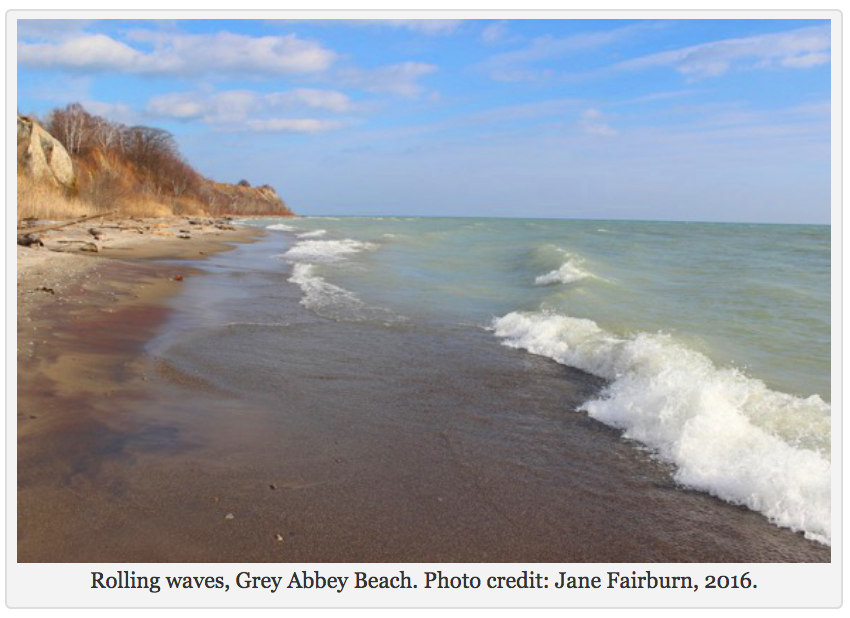
Hi everyone,
In the early part of the twentieth century, the Township of Scarborough was blessed with myriad areas along the shore where people could get into the lake and swim. Between Fallingbrook and Kennedy Roads alone, three supervised areas existed, beginning in 1928 (“Parks in Scarborough Remembered”, Scarborough Historical Notes and Comments). Now all of that is gone. One of our last informal beach areas, a beguiling little pebble beach at the bottom of the Doris McCarthy trail (Gates Gully), was cannibalized to make way for the Waterfront Trail, an asphalt pathway, or superhighway, depending on your perspective, that currently runs through some sections of the Scarborough waterfront.
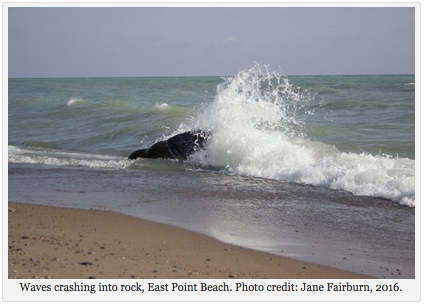
It’s hard to believe that in the twenty-first century, when people are returning to the waterfront, we find ourselves in Scarborough debating the benefits of paving over substantial swaths of two of our last three remaining beaches. I harken back to the words of Sir Geoffrey Jellicoe, “The underlying attraction to the movement of water and sand is biological. If we look more deeply we can see it as the basis of an abstract idea linking ourselves with the limitless mechanics of the universe.”

I walked two of those three beaches from end to end this weekend with Jen Falvy. Please join me on this pictorial journey and ask yourself: is it a fair compromise to pave over these last remaining wild spaces, in whole or in part, to accommodate more “access” to the water’s edge? And exactly what kind of “access” to the water is gained on the revetment and beach headland areas of the Waterfront Trail? I climbed up onto the westerly portion of the trail that juts into the lake near the sands of Bluffer’s Park — please don’t confuse this monster with its fairer sister to the west in the Beach district, which exists essentially at grade with the water’s edge. The trail, as it winds its way east through Scarborough, is generally a behemoth-like armour rock affair that stops erosion of the shoreline (in many areas, a laudable and necessary goal). The irony is that this kind of trail allows access to the trail itself, but little else. The experience of the lake is more distant: the sound of the waves is hushed and the spray of the water pacified when you’re at least ten feet above the lake. Do we want to pave over large sections of two of our remaining beaches to accommodate more of that? Let’s face it folks: sometimes the proper place for the Waterfront Trail is on the headland or the road, above the beach.
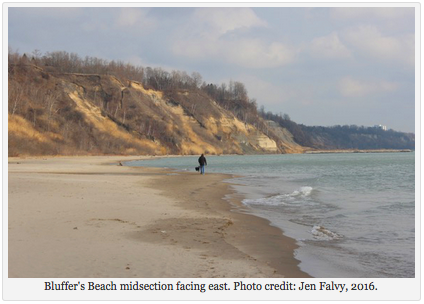
It’s also critical, to my thinking, that the beaches offer rich habitat for a diverse number of creatures, large and small. I am flummoxed as to why the TRCA would include so many options in their alternatives package that significantly eliminate habitat for animals that live “along the shore”, yet stalwartly highlight the increased fish habitat that only the most intrepid angler might venture down to see, let alone catch. (Click on the link at the bottom of this post for access to a PDF detailing the TRCA’s alternatives, beginning on page 19.) I am also concerned that the obvious loss of substantial and varied habitat that would occur with the installation of the trail is not noted in their alternatives package at this stage — it seems to be a point to be addressed among others once the preferred alternative is chosen. Talk about putting the cart before the horse! Woah Nellie.
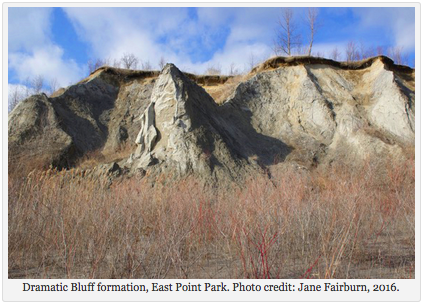
Please write to the TRCA and tell them that diversity is better than simply eating up more beach with the Waterfront Trail. We should be able to swim and fish in the lake, walk on the sand, hike and bike on the trail, and get into a boat at the shore.
You can send in your comments, either by email or letter, to Lindsay Clapp, Project Manager, waterfront@trca.on.ca (101 Exchange Avenue, Vaughan, ON, L4K 5R6). You may also respond in the comments section of the workbook document, if you don’t want to send a letter: http://www.trca.on.ca/dotAsset/217818.pdf.
Link to PDF detailing TRCA alternatives: http://www.trca.on.ca/dotAsset/217960.pdf
Scarborough’s beaches fall into three different Wards. It would be great if you could also make your views known to the Councillors. Just forward all of them the comments you have made to the TRCA at the addresses below.
Here is their contact information:
Gary Crawford
Bluffer’s Beach
councillor_crawford@toronto.ca
Paul Ainslie
Grey Abbey Beach (may be viewed as an adjunct of East Point Beach)
councillor_ainslie@toronto.ca
Ron Moeser
East Point Beach
councillor_moeser@toronto.ca
See you down at the beach.
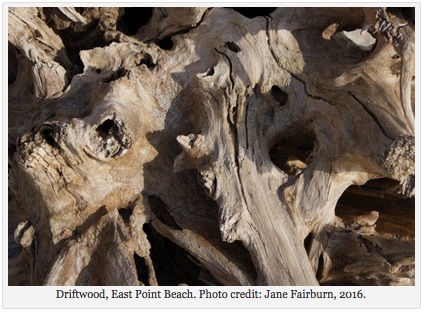



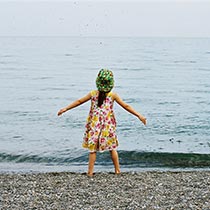
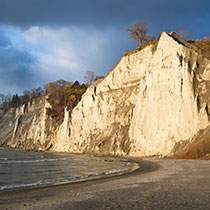
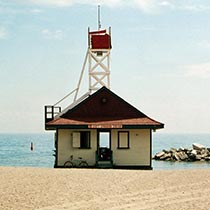
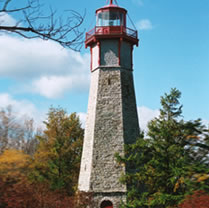

{ 6 comments… read them below or add one }
Great shots. Thanks for sharing
Thanks very much Andrew.
Thank you for this article of an important juncture for Scarborough’s future waterfront. These stretches of beaches in Scarborough are currently an untouched and natural treasure. To think that they want to alter, pave over, and erect hideous armored rock walls that effectively destroy natural coastline is disturbing. This is the last remaining natural shoreline in the Toronto area. Bike trails and paved pedestrian walkways must not take priority at the expense of destroying natural environments such as this.
We are custodians of our natural heritage and we owe future generations the same access to nature and animal life as we now enjoy – however little is left in our fair city. This is our chance to speak out for the natural world that is in all our best interest to protect.
Hi Mike, thanks for writing.
Your words of support mean a lot to me and I heartily agree that we owe it to future generations to protect our natural heritage. The Toronto and Region Conservation Authority often likes to point out that the beach, especially at Bluffer’s Park, is not “natural” — it is true that truckloads of sand were dropped at the base of the Bluffs to widen what little beach there was originally in that specific area of the Scarborough shore. The fact, however, that it was created by humans, is not an argument for its destruction. It is specious to say that because the beach was “created”, it can more easily be altered or partially destroyed to make way for the Waterfront Trail, which in this area of Toronto is really a superhighway. If you can drive a Hummer down it, it’s not a trail, at least from my perspective. We have lots of Waterfront “Trail” along the Scarborough shore already. What we need is diversity while visiting the shore. Can you imagine the educational possibilities alone for future generations if East Point Beach is left intact? Feel free to share these ideas with whomever will listen.
Best, Jane
If a plan was afoot to pave Miami Beach or Copacabana Beach, won’t there be a hue and cry of “Are you crazy?!”. Yet if some beach along the Toronto waterfront is destined for such a fate, there are few voices in protest because, well, “it’s just a minor beach – what’s the big deal?” The big deal is that future generations will be like the cartoon where an adult is pointing to an exhibit in a museum and telling a child, “It’s called a tree – there used to be lots of them.” A beach is there for a reason … that’s why it’s there. Enhance the area somehow while leaving well enough alone as much as possible.
Tansi, Wil. Thanks for your interest and comment. Perhaps the old adage, “if it ain’t broke, don’t fix it” comes to mind? Instead of figuring out ways to “save” ourselves from nature, we should be embracing the wild and exploring the beauty of the natural world that surrounds us. Ekusi